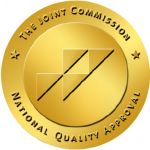Almost always, whenever a news channel shows pictures of people on crystal meth, they have some festering and painful looking sores on their faces. There are several different reasons why people addicted to meth develop sores. One of the most common causes is the obsessive picking and scratching at the skin because it feels like insects are crawling under the skin.
Meth mites, the sensation that there are bugs or insects burrowing on or under the skin, is a fairly common side effect of chronic and extreme methamphetamine use. It is one of the most visible and obvious signs of meth addiction. This article will explain some of the history of meth, some of the science behind “meth mites” as well as other psychological and physical side effects of meth addiction.
History of Methamphetamine
Japanese chemists in 1919 first synthesized methamphetamine. It was first used as a weight loss, narcolepsy, and asthma treatment as a more potent alternative to the ephedra plant. During World War II, both the Axis Powers and the Allies gave meth to its soldiers during battle. Even though it was classified as Schedule II illegal drug in 1971 by Congress, it is still rarely prescribed as Desoxyn to treat extreme cases of obesity and ADHD.
Since 1971, illicit methamphetamine use has continued to rise. It is one of the easier illegal drugs to make and is popularly known as Ice, Crystal, Speed, Crank, Glass, Tweak, and many other names. According to the National Survey on Drug Use and Health in 2012, more than 440,000 people reported using meth within the last 30 days.
Abuse and addiction to crystal meth have steadily risen since 2006. In 2016, San Diego had by far the most methamphetamine seizures in the country. More than 20,000 pounds of the drug were confiscated in San Diego, and the rest of the country is experiencing a similar and growing meth epidemic. While everyone knows how dangerous and fatal opioids are, overdoses caused by stimulants accounted for more than 6,000 deaths (mostly by meth).
If you or someone you know are struggling with meth addiction, there are resources that will help you or them throughout the detox process.
Meth Mites and Psychosis
Meth Mites are the non-scientific term used to describe formication caused by stimulant abuse. Formication, the obsessive belief that one is being bitten by or infested by bugs and insects, is a symptom of meth-induced psychosis. Psychosis describes the condition of somebody whose thoughts and emotions have become impaired and compromised to the point that they have lost all touch with reality.
In research published by Neurologic Clinics, more than 40% of meth users admitted to drug treatment facilities reported experiencing the phenomena of meth mites. Psychosis caused by meth abuse occurs from sleep deprivation, one of the many side effects of stimulants like methamphetamine.
Meth users will go days without sleep because of repeated use. Meth increases dopamine levels in the brain followed by extreme withdrawal and increased agitation, depression, and mood swings. To continue feeling high, users will binge on the drug and will not sleep in the process.
Other Psychological Side Effects
Punding and stereotypy, the obsessive and repetitive behaviors that are common for meth users, is another visible sign of someone high on meth. Punding is when someone engages in non-goal oriented tasks on a seemingly endless loop—like assembling and disassembling clocks, ceaseless organizing and re-organizing of things, incessant cleaning of the same area, among other abnormal monotonous, never-ending tasks. Researchers theorize that the constant manipulation of dopamine receptors has something to do with this obsessive-compulsive behavior that is almost exclusively caused by chronic and extreme methamphetamine and amphetamine abuse.
Methamphetamine Treatment
If you or a loved one wants to get off meth, heal their sores, and recover from the adverse psychological effects of meth, Boardwalk Recovery’s Intensive Outpatient treatment program specializes in treating methamphetamine addiction.
The program is made up of three phases to help addicts continue growing in their newfound recovery. The principles of Boardwalk Recovery’s treatment plans include:
- Individualized care
- Evidence-based treatment interventions
- Supportive and compassionate community
- Educated and knowledgeable clinical staff
- Family involvement
Hope is on the horizon, and with your willingness and strength, the physical and psychological signs of meth addiction can become a thing of the past. Contact us today to learn more about how we will begin treating your addiction and help you or your loved one live a purposeful and healthy life.
Life can be good again and we’d like to show you how.






